Will men’s doubles gold in London go to a third-time lucky Cai Yun? Will Jung Jae Sung bounce back from ignominious first-round defeat in Beijing to win the medal he so wants to dedicate to his mother’s memory? Or will one of the dozen other top-notch pairs muscle in on the hardware?
By Don Hearn, Badzine Correspondent. Photos: Badmintonphoto
A little over a week remains until the world’s best doubles shuttlers take to the badminton courts at Wembley Arena to compete for gold at the 2012 London Olympic Games. The men’s doubles, in particular, may provide the culmination to a long-standing rivalry involving two veterans who have dominated over the last six years.
Lee Yong Dae / Jung Jae Sung vs. Cai Yun / Fu Haifeng (all pictured above) may not have produced as many episodes as the Lee Chong Wei-Lin Dan rivalry but it is far less one-sided. Once Asian Games matchups are considered, the Koreans have a 13-11 advantage.
Cai Yun and Fu Haifeng (pictured right), the top seeds, began the last two Olympic Games as second seeds, finished with silver in Beijing, and come into this one as world #2. The pairs that stopped them in the past may be out of the way but the Koreans are not the only ones who may have their number at Wembley.
Cai Yun is now 32 and while he may continue to play past London, this is more than likely his last Olympics and either way, he will not get the chance to even the head-to-head record with the Koreans as Jung Jae Sung (whose name will appear as ‘Chung Jae Sung’ during the Olympics, to match his passport spelling) has repeatedly made it clear that his last international match will be in Wembley, where he is determined to succeed in winning a gold to dedicate to his new wife and to his mother, whom he lost in 2009.
Yet another 32-year-old in contention, Mathias Boe is in a partnership that has a slightly shorter history with the top two seeds but Boe and Mogensen have half a dozen combined wins over the top guns and will never be taken lightly.
Doubles draw has a new look
The new format for the Olympic Games puts extra emphasis on the top eight teams especially. With four groups for the preliminary round and only the top two pairs emerging to play an elimination round that begins with the quarter-finals, the groupings decided in the July 23rd draw will be very important.
Despite the success of the top two teams, men’s doubles is still known as the least predictable of badminton’s five disciplines. Also, in spite of Cai/Fu’s 4 world titles and 2 All England crowns, it is the most elusive for China, particularly in the Olympics, where Cai/Fu were the badminton superpower’s first Olympic finalists in Beijing.
Another factor to consider is that a group format may favour the 2nd and 3rd seeds. While Cai/Fu failed to reach the knockout round the Super Series Finals last year and were stopped in the semis the previous time, Mathias Boe / Carsten Mogensen (pictured left) and Jung/Lee have reached three finals each. The Danes have won their last two of three consecutive finals, despite losing all three times to the Koreans in group play.
Who has the edge?
Still, the first hurdles are very important, and looking at the head-to-head records for the top 8 teams, shown at the end of this article, suggests that the top four teams have a good chance of topping their respective groups. With just one seeded pair in each of the round-robin groups, the key match in each group is bound to be one that involves the seed and another top 8 pair.
On paper, the pair most dangerous to the four seeds is Chai Biao / Guo Zhendong (pictured), who have a winning record against the two Korean pairs, are at par with Cai/Fu and are only winless against the Danes. However, the #2 Chinese pair have been erratic over the last year, failing to advance past the semi-finals in 2012, in addition to a string of six events in the fall where they were gone by the second round.
On the other hand, Boe/Mogensen seem, on paper, to have the most trouble with the next echelon; however, again here, their last loss to Fang/Lee was over a year ago and they beat the Chinese Taipei team at home a few months earlier. As for their porous 4-8 record against Koo/Tan, the last of the Malaysians’ victories was in 2010, after which the Danes began a 3-match winning streak.
Wisdom comes with age; do nerves come with experience?
Of course, upsets will happen, especially when nerves set in and this is particularly important in the Olympics, as Jung Jae Sung, the All England champion who fell in the first round in Beijing, can attest.
London will begin, though, with a few underdogs already enjoying an edge. Ivanov/Sozonov won their only meeting with Chai/Guo. Thailand’s Bodin Issara / Maneepong Jongjit (pictured) have won both their matches this year against Korea’s Ko/Yoo and both of these pairs, plus the Russians, are playing in their first Olympics, although the Koreans have been in more World Championships and in two Super Series Finals. Jongjit is also the youngest player in the draw, just one year younger than partner Issara and Chai Biao.
Altogether, half of the pairs (the 3 mentioned above, plus Boe/Mogensen, Ahsan/Septano, Fang/Lee, Kindervater/Schoettler, and James/Viljoen) are playing in the Olympics for the first time, while Chai Biao, Adam Cwalina, and Naoki Kawamae are joining experienced partners.
On the other side of the spectrum, 34-year-old Michal Logosz (pictured) is longest in the Olympic tooth, preparing to play in his fourth. He is not the oldest, however. That distinction, as well as that of being the sole returning champion, belongs to Tony Gunawan of the USA, who also played his first Olympics in Sydney in 2000, when he won gold. Howard Bach, Gunawan’s partner, has played in two Olympics already, as has Shoji Sato, though only in singles. The only partnership with more than one Olympic Games outing under their belts is Cai/Fu.
The draw to decide the groups is set to take place on July 23rd in the London Olympic main press centre.
For more information, visit the official website for the London Olympics
Results should be available on tournamentsoftware
Please see below the head-to-head records for the top eight pairs. Details missing from tournamentsoftware have been corrected and are noted below.
| Cai Fu |
Jung Lee |
Boe Mogensen |
Ko Yoo |
Chai Guo |
Ahsan Septano |
Fang Lee |
Koo Tan |
|
| Cai Fu |
11-13* | 6-2 | 7-1 | 1-1 | 5-0 | 5-0 | 9-5† | |
| Jung Lee |
13-11* | 14-4** | 4-4 | 1-2 | 2-0 | 3-0 | 12-3†† | |
| Boe Mogensen |
2-6 | 4-14** | 6-0 | 4-0 | 5-1 | 3-3 | 4-8†† | |
| Ko Yoo |
1-7 | 4-4 | 0-6 | 1-2 | 5-0 | 3-1 | 6-1 | |
| Chai Guo |
1-1 | 2-1 | 0-4 | 2-1 | 4-1 | 2-0 | 0-1 | |
| Ahsan Septano |
0-5 | 0-2 | 1-5 | 0-5 | 1-4 | 3-2 | 3-3††† | |
| Fang Lee |
0-5 | 0-3 | 3-3 | 1-3 | 0-2 | 2-3 | 1-1 | |
| Koo Tan |
5-9† | 3-12†† | 8-4†† | 1-6 | 1-0 | 3-3††† | 1-1 |
* Includes two wins for Jung/Lee at the 2010 Asian Games and one win for Cai/Fu at the 2006 Asian Games
** Includes two wins for Jung/Lee at the 2009 Super Series Finals
† Includes one win for Koo/Tan at the 2006 Asian Games
†† Includes one win for Koo/Tan at the 2008 Super Series Finals
††† Includes one win for Koo/Tan at the 2009 SEA Games
![OLYMPIC MD Preview – Whose swan song will hit gold? Will men’s doubles gold in London go to a third-time lucky Cai Yun? Will Jung Jae Sung bounce back from ignominious first-round defeat in Beijing to win the medal he […]](http://www.badzine.net/wp-content/uploads/Newsflash-thumbnail.png)
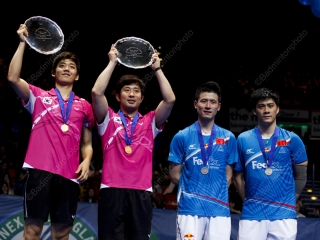
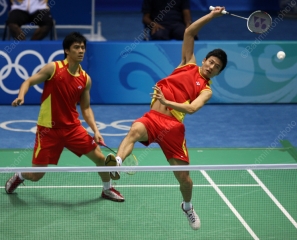
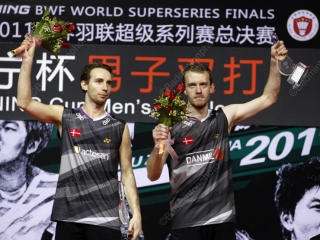

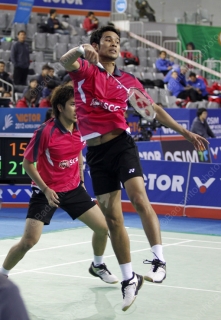
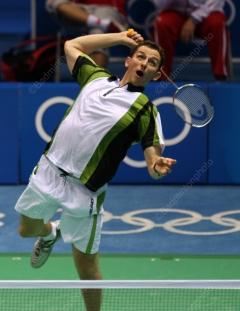

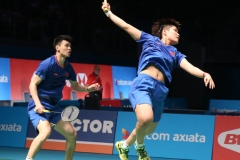
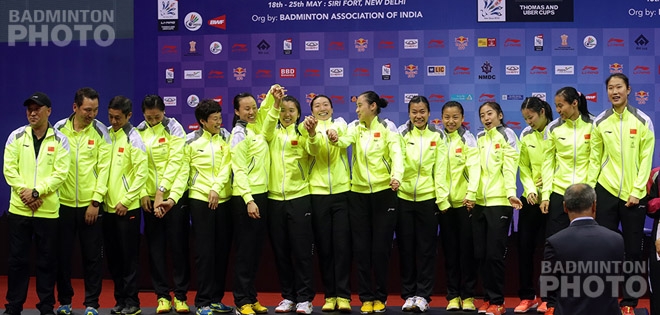
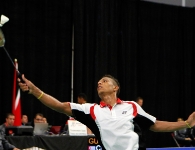
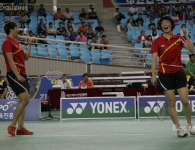
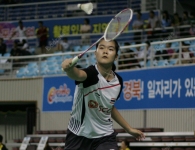
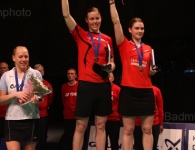
Leave a Reply